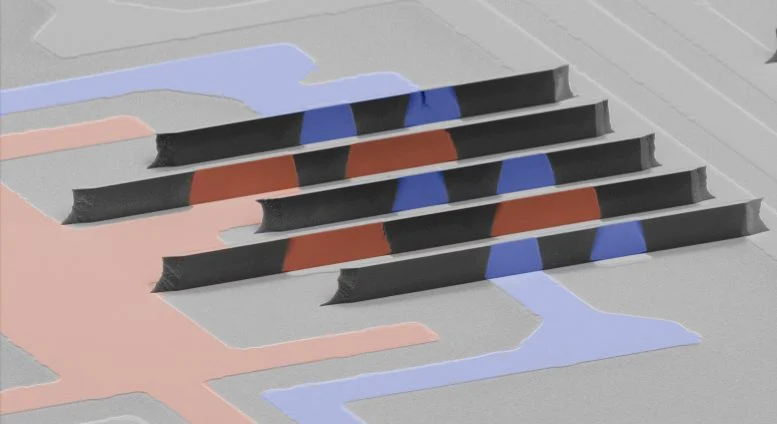Researchers from the University of Florida have developed a new technique that uses semiconductor technology to produce processors that greatly improve the efficiency of transmitting large amounts of data around the world. The innovation presented on the current cover of the magazine Nature ElectronicsIt is poised to transform the wireless landscape at a time when advances in artificial intelligence are significantly increasing demand.
Traditionally, wireless communications have relied on planar processors, which, despite their efficiency, are limited to operating in a limited portion of the electromagnetic spectrum due to their two-dimensional structure. The approach developed by UF leverages the power of semiconductor technology to literally take wireless communications to a new dimension.
Researchers have successfully transitioned from planar to three-dimensional processors, ushering in a new era of compactness and data transfer efficiency.
Improved data and application transfer
D., Ph.D., an associate professor in the UF Department of Electrical and Computer Engineering whose team developed the 3D processor. Rozbeh Tabrizian said this is a pivotal moment in the evolution of wireless communications, as the world becomes increasingly dependent on uninterrupted connectivity. and real-time data exchange.
“Transmitting data more efficiently and reliably will open the door to new opportunities and facilitate progress in areas such as ‘smart’ cities, remote healthcare and augmented reality,” he said.
Data on our mobile phones and tablets is now converted into electromagnetic waves that travel back and forth between billions of users. Just as highway design and traffic lights keep traffic flowing efficiently through the city, filters or spectrum processors move data at different frequencies.
Limitations of traditional processors
“A city’s infrastructure can only handle a certain level of traffic, and if you keep increasing the number of cars you’re going to have problems,” Tabrizian said. “We are starting to reach the maximum amount of data we can move efficiently. “Planar processors are no longer useful because they limit us to a very limited frequency range.”
Increasing demand with the emergence of artificial intelligence and autonomous devices will require many more traffic lights in the form of filters at many different frequencies to move data to the desired location.
“Think of it as lights on the road and in the air,” Tabrizian said. “It’s getting messy. “A single chip built for just one frequency no longer makes sense.”
Tebrizian and colleagues at the Herbert Wertheim School of Engineering use CMOS technology, or metal oxide semiconductor additive manufacturing, to create a three-dimensional nanomechanical resonator.
“By leveraging the strengths of semiconductor technologies in integration, routing and packaging, we can integrate different frequency-dependent processors on a single chip,” Tabrizian said. “This is a huge advantage.”
3D processors take up less physical space and offer higher performance and unlimited scalability; This means they can meet increasing demands.
“This completely new type of spectrum processor, combining different frequencies on a single chip, is a real game changer,” said David Arnold, associate dean of electrical and computer engineering. “Doctor. Tabrizian’s new approach to flexible frequency-switching multiband radio chipsets not only solves a major manufacturing problem, but also allows designers to imagine entirely new communication strategies in an increasingly congested wireless world. Simply put, our wireless devices are better , will work faster and safer.”













